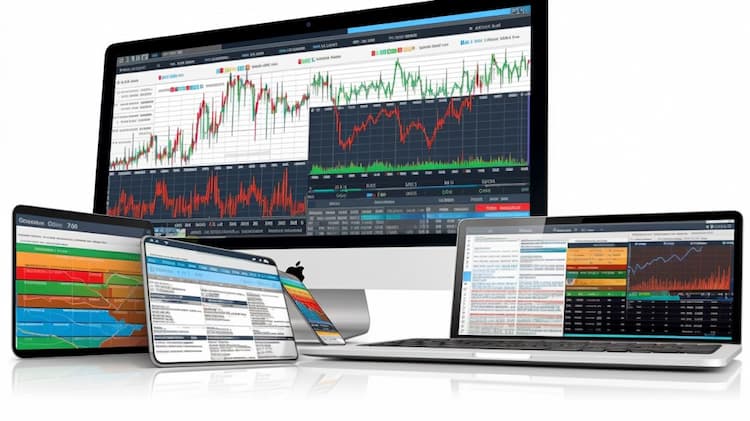
XLF VS VFH
Exchange-Traded Funds (ETFs) have brought a new level of accessibility and diversity to the world of investing. In this article, we will conduct an in-depth comparison between two prominent ETFs: XLF (Financial Select Sector SPDR Fund) and VFH (Vanguard Financials ETF). By exploring various facets including ETF tickers, full names, issuers, sectors, top holdings, capitalization, strategy, tracking, and exposure, we can gain valuable insights into their respective profiles.
XLF Vs VFH: Overview
The XLF and VFH ETFs both offer exposure to the financial sector, but they do so through slightly different approaches. XLF, managed by State Street Global Advisors, tracks the Financial Select Sector Index, providing broad representation of companies within the financial sector. On the other hand, VFH, managed by Vanguard, follows the MSCI US Investable Market Financials 25/50 Index. These nuances in tracking indices can lead to varying risk and return profiles, which we'll explore further.
XLF Vs VFH: Sectors and Top Holdings
When considering sectors, XLF and VFH share many commonalities due to their focus on the financial industry. They both include segments such as banking, insurance, and real estate investment trusts (REITs). However, the specific weightings and allocations to different sub-sectors can vary. For instance, XLF might have a higher exposure to large financial institutions, while VFH could emphasize a broader range of financial services companies. Understanding these sector breakdowns can aid investors in making informed decisions. Turning to top holdings, XLF's holdings might include financial giants like JPMorgan Chase, Bank of America, and Wells Fargo. VFH, meanwhile, could include financial powerhouses like Berkshire Hathaway, Visa, and Mastercard. Investors interested in specific companies or industry leaders may find these details crucial in their selection process.
 XLF overlap XLF VS VFH
XLF overlap XLF VS VFH
XLF Vs VFH: Capitalization and Strategy
The XLF and VFH ETFs differ in their market capitalization and investment strategies. XLF, with its significant assets under management (AUM), is reflective of its popularity among investors seeking exposure to a broad range of financial firms. VFH, as a Vanguard ETF, is known for its passive investment approach and its focus on providing investors with a diversified representation of the financial sector. It’s essential to recognize that these differing capitalization and strategy elements can result in distinct returns and risk profiles. While XLF may provide a more comprehensive view of the financial sector, VFH's strategy could offer targeted exposure to specific financial segments.
XLF Vs VFH: Tracking and Exposure
The tracking and exposure mechanisms of XLF and VFH play a critical role in their performance. XLF aims to mirror the performance of the Financial Select Sector Index, which encompasses a broader range of financial companies. VFH, by tracking the MSCI US Investable Market Financials 25/50 Index, may focus more on larger companies within the financial sector.This tracking distinction can influence how each ETF responds to changes in the market and the financial sector. Investors should carefully assess these tracking methodologies to align their investment objectives with the ETF that best suits their preferences.
Conclusion
The XLF and VFH ETFs offer investors unique opportunities to gain exposure to the financial sector. By diving into their tickers, full names, issuers, sectors, top holdings, capitalization, strategy, tracking, and exposure, investors can make well-informed decisions that align with their financial goals. For those seeking a deeper understanding of holdings, correlations, overlaps, and other insights, ETF Insider provides an invaluable tool. This user-friendly app equips investors with the information they need to navigate the complexities of these and other financial instruments effectively.
Disclaimer: This article is intended for informational purposes only and does not provide any investment advisory services.
Sources:
https://www.ssga.com/ ETF issuer
https://www.ssga.com/us/en/intermediary/etfs/funds/the-financial-select-sector-spdr-fund-xlfETF official page
XLF quote and analysis
Discover the top holdings, correlations, and overlaps of ETFs using our visualization tool.
Our app allows you to build and track your portfolio.
To learn more about the XLF Financial Select Sector SPDR Fund, access our dedicated page now.
FAQ
Why is XLF better than VFH?
XLF may be considered better than VFH for some investors due to its specific focus, offering diversification.
Does VFH beat XLF?
VFH's performance relative to XLF will vary over time, depending on market conditions.
Should I invest in XLF or VFH?
The choice between XLF and VFH should align with your investment goals, risk tolerance, and desired exposure.
Are XLF and VFH good investments?
Both XLF and VFH can be suitable investments depending on individual investment strategies, goals, and risk profiles.
What is the correlation between XLF and VFH?
The correlation between XLF and VFH can vary over time, reflecting differences in performance.






































